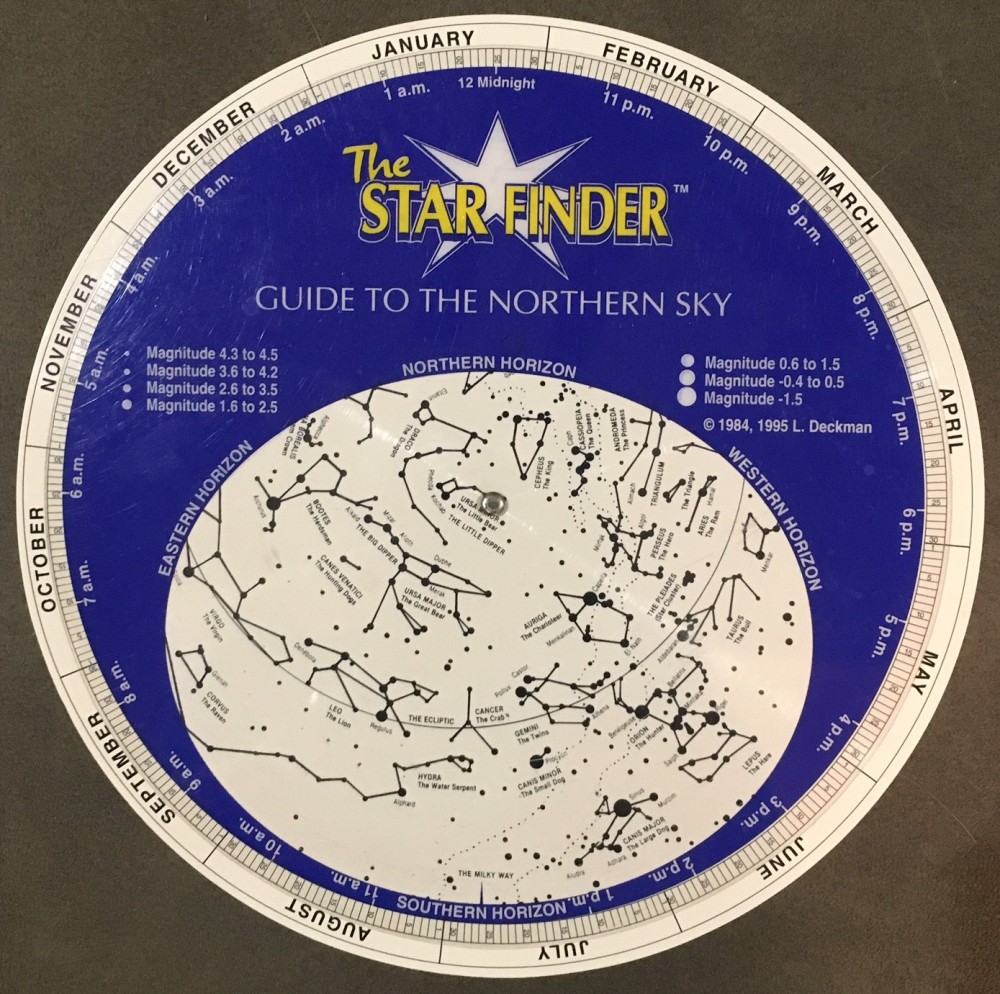
JeffPo's Star Charts Page
Last update: 09/02/19
Finding your way in the night sky can be kind of daunting, especially if you're unfamiliar with the constellations. You'll never be able to find that invisible to the naked eye galaxy if you can't figure out the celestial road signs and markers that lead the way to it. Of course with technology, it's MUCH easier that it use to be when I was starting out. Today people have apps on their cellular phones that allow them to point their phones at the sky and it will identify the constellations, stars, and brighter objects for them. To see what astronomy software and apps I use, visit my Astronomy Software Page. I actually do highly recommend a cell phone app for beginners because it's probably the fast method to introducing you to finding constellations and recognizing them. To find the celestial gems hidden in the constellations, you must first be able to find and recognize the constellation. Once you understand the relative sizes of the constellations to the sky and each other, it will be an aha! moment for you.
And of course, with the fancy computerized telescopes, you can merely punch in what you want to see and it will move to the object for you. But not all telescopes have that feature and certainly that want help you if you're using binoculars. Knowledge is power and it's very rewarding to learn the night sky and how to find stuff within it. Yes, when I'm doing a serious observing session I do use my computer and a computerized telescope. But I still have other, more simpler telescopes that I use at times. For those, I have to go to the star charts to find my way.
Star Charts

This is a planisphere. It's an excellent tool for seeing what constellations are up, or figuring out when they will rise and set, or be on the meridian for best viewing. This is also a great tool for beginning stargazers as it represents how the sky looks and changes throughout the night, and throughout the seasons. It's made of two piece of stacked paper (or plastic in this case). The top one has the viewing window and times. The bottom one has the dates on the outer rim. You just rotate it until the desired time matches up with the desired date and it will show what's up in the sky. Want to know when Orion will rise? Well just rotate the dials until Orion is on the eastern horizon and look at the various dates and times associated with it. Likewise for know when a constellation will set. You just put it on the western horizon instead.
Planisheres come in a variety of sizes and different latitudes to match your location. They even make them for the southern hemisphere. One small pitfall with the one I have is that when you try to project the curved sky onto a flat surface, you will get some distortion at the edges. That means the constellations that remain low in the southern part of the sky will be drawn stretched out, and not like they really appear in the sky. They do make a better planisphere that actually has the southern sky on the back, drawn without distortion. I'm familiar enough with the sky that it doesn't bother me but beginners might want to get the better planisphere that displays the southern sky on the back.
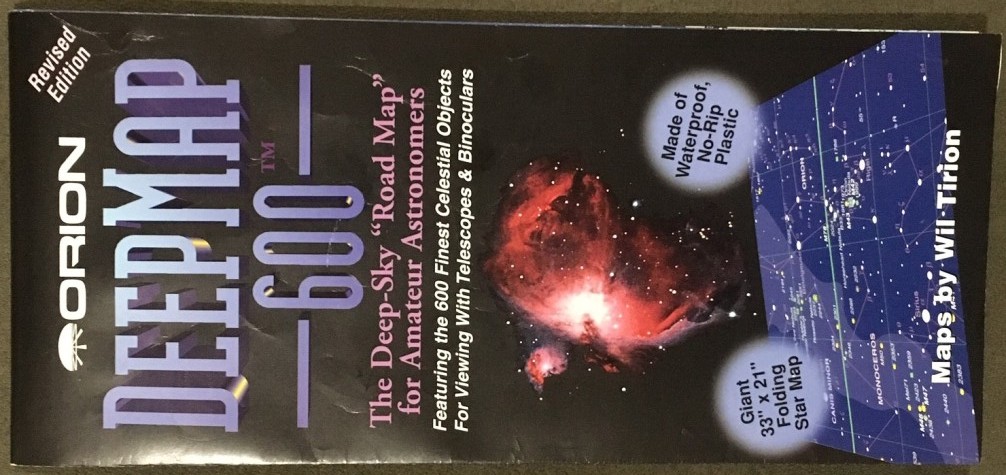
This is an Orion DeepMap 600 folding star chart. It charts 600 deepsky objects (i.e. galaxies, nebulas, and star clusters). It's a great, economical chart for beginners and more experienced observers too. I still use mine quite a bit.
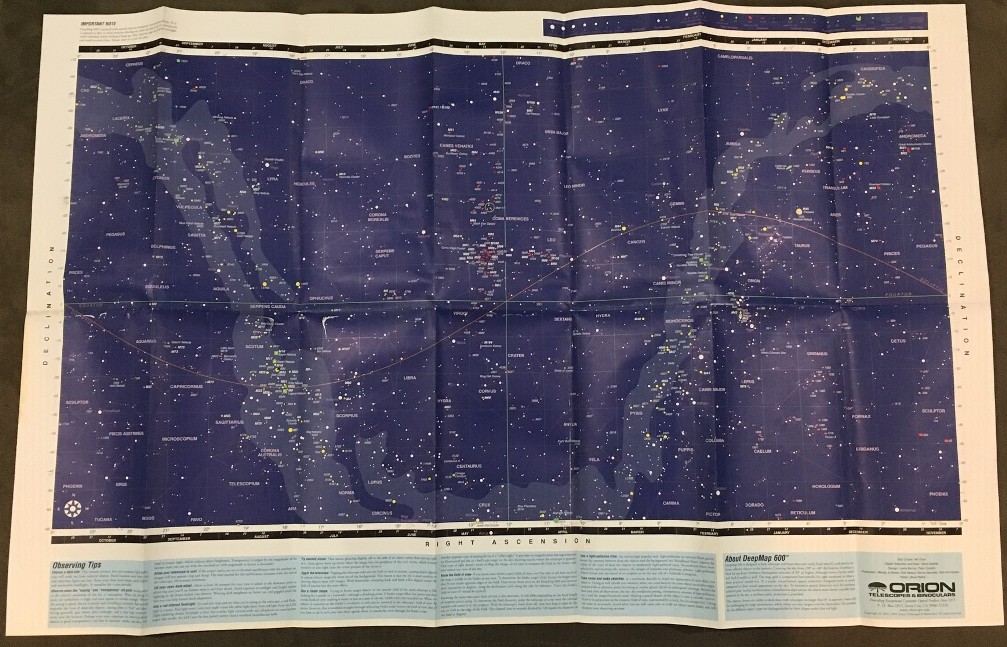
It unfolds to a poster size star char, with the various constellations drawn in, and the objects plotted and labeled. It's great for the brighter objects. Some dimmer objects might would need a more detailed view, and a zoomed in scale, but this chart would keep you busy for a very long time.
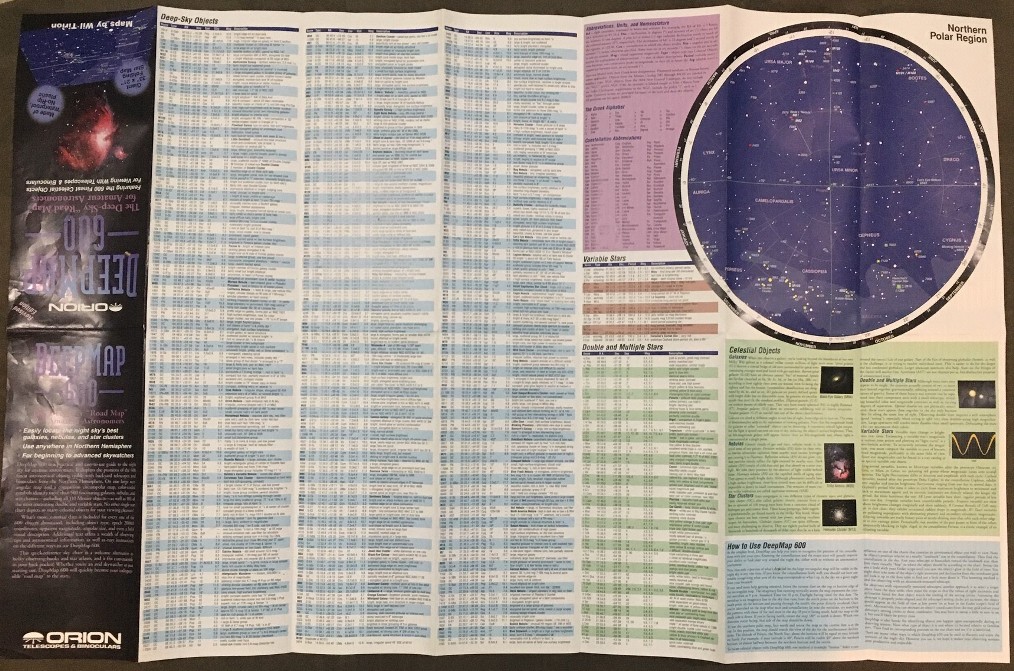
The backside list information about all the objects. Plus it has other astronomical information. It' also has a list of double stars you can view.
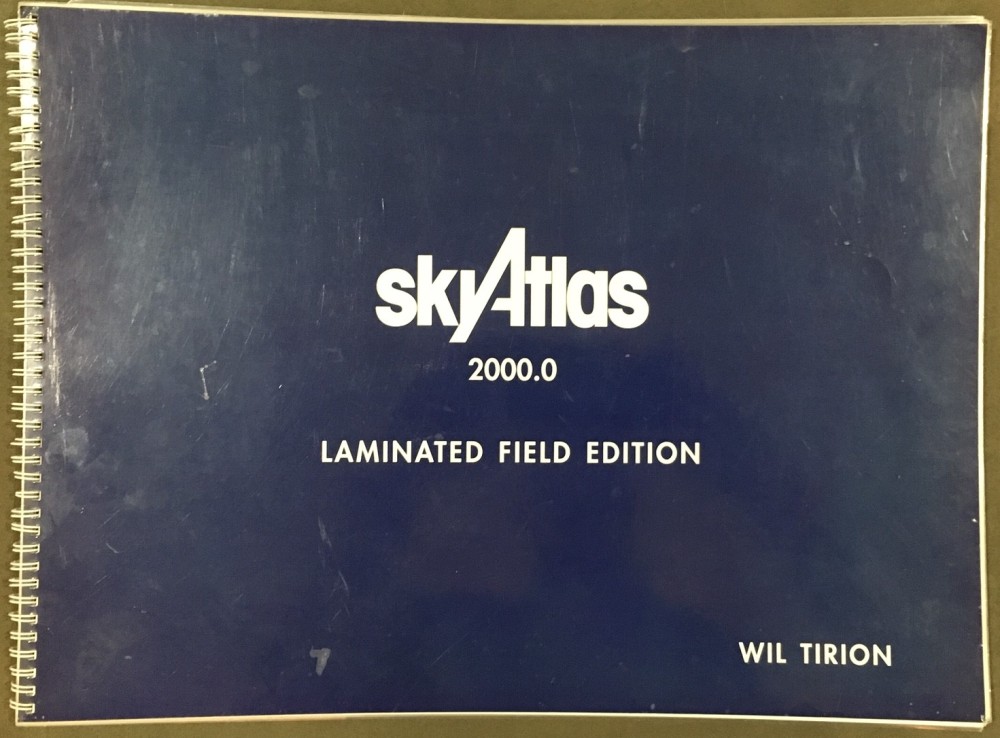
This is a SkyAtlas 2000 laminated star chart. It's a large star chart that plots small sections of the sky on each page (26 pages covering the entire sky), such that you have a more zoomed in view.
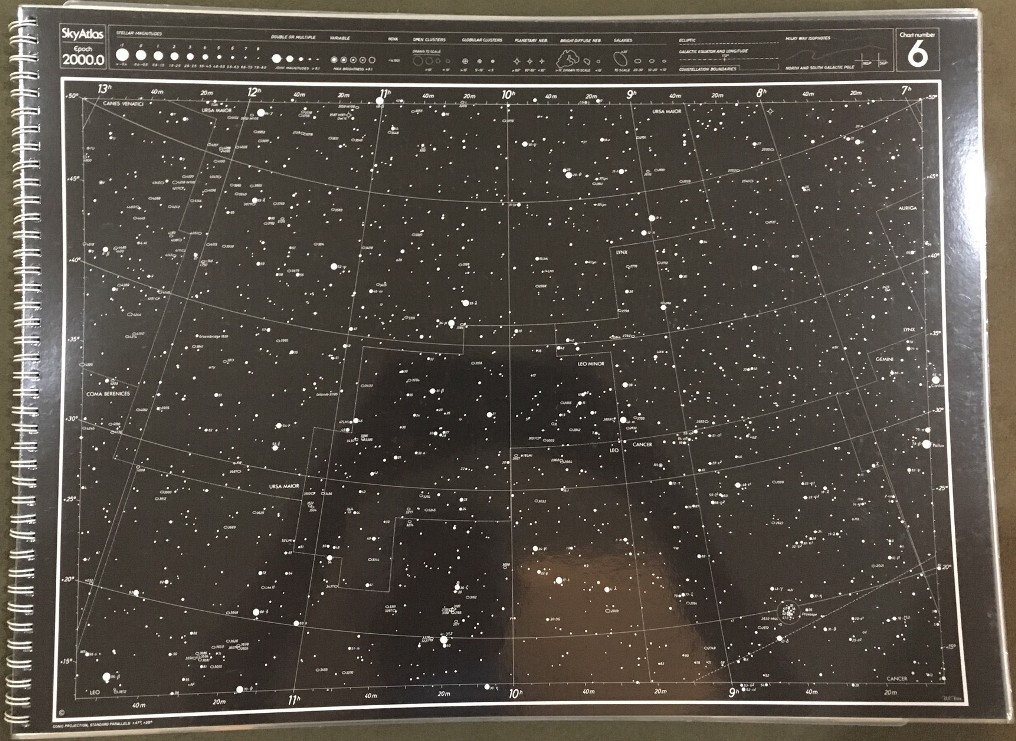
This is very detailed star chart, with stars down to 8th magnitude plotted. It also comes with a coordinate grid overlay such that you can determine an object's celestial coordinates from the chart. The constellation lines are not drawn in, and there is so much detail, that a beginner would probably find this star chart too frustrating to use. But for those with experience, it's awesome!
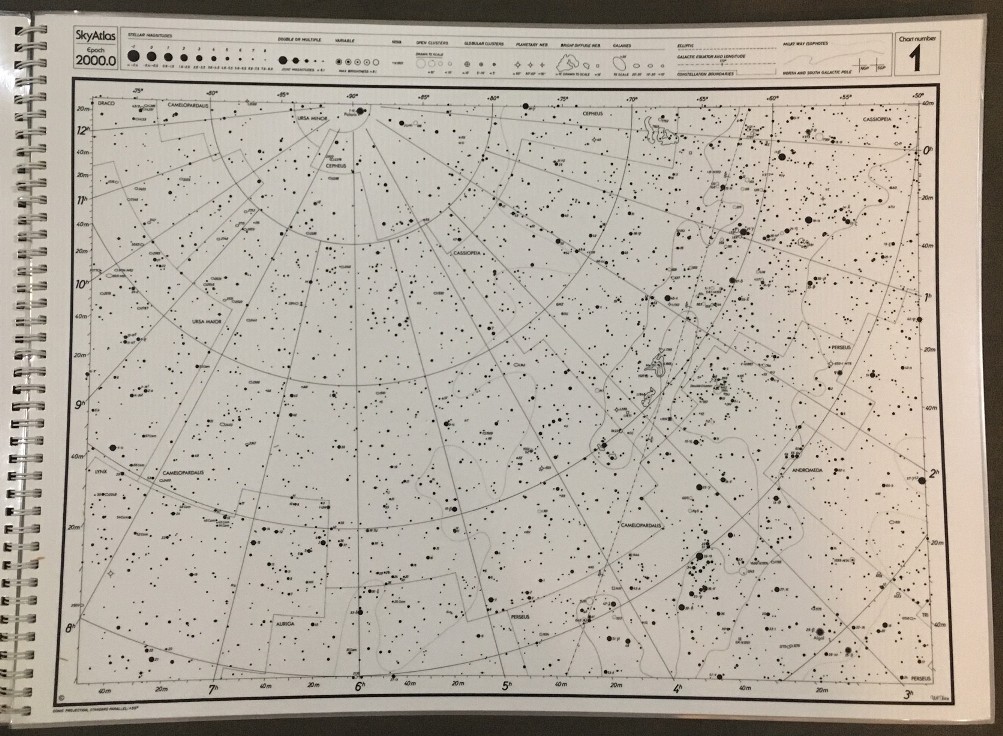
This is another copy I have. It's the Desk edition. It has black stars plotted on a white background instead of white stars plotted on a black background. While white stars on a black background might seem more natural for a star chart, I actually found it a little harder to read in the dark. I had to turn my red flashlight up to a brighter setting to get enough contrast. That's why I bought this edition with the white background, because it's easier on my eyes.
Other Resources
These charts are really on the tip of the iceberg compared to other resources I have. I have a lot of books dedicated to deepsky objects, the moon, etc. But charts above are the ones I use, at the telescope, as I observe. I do recommend some of the books you'll find, as they are great for planning what you want to go after. But you'll still need a good star chart for the field, if you're not using electronics.
Again, this webpage is on the paper charts I use. To see what astronomy software and apps I use, visit my Astronomy Software Page.